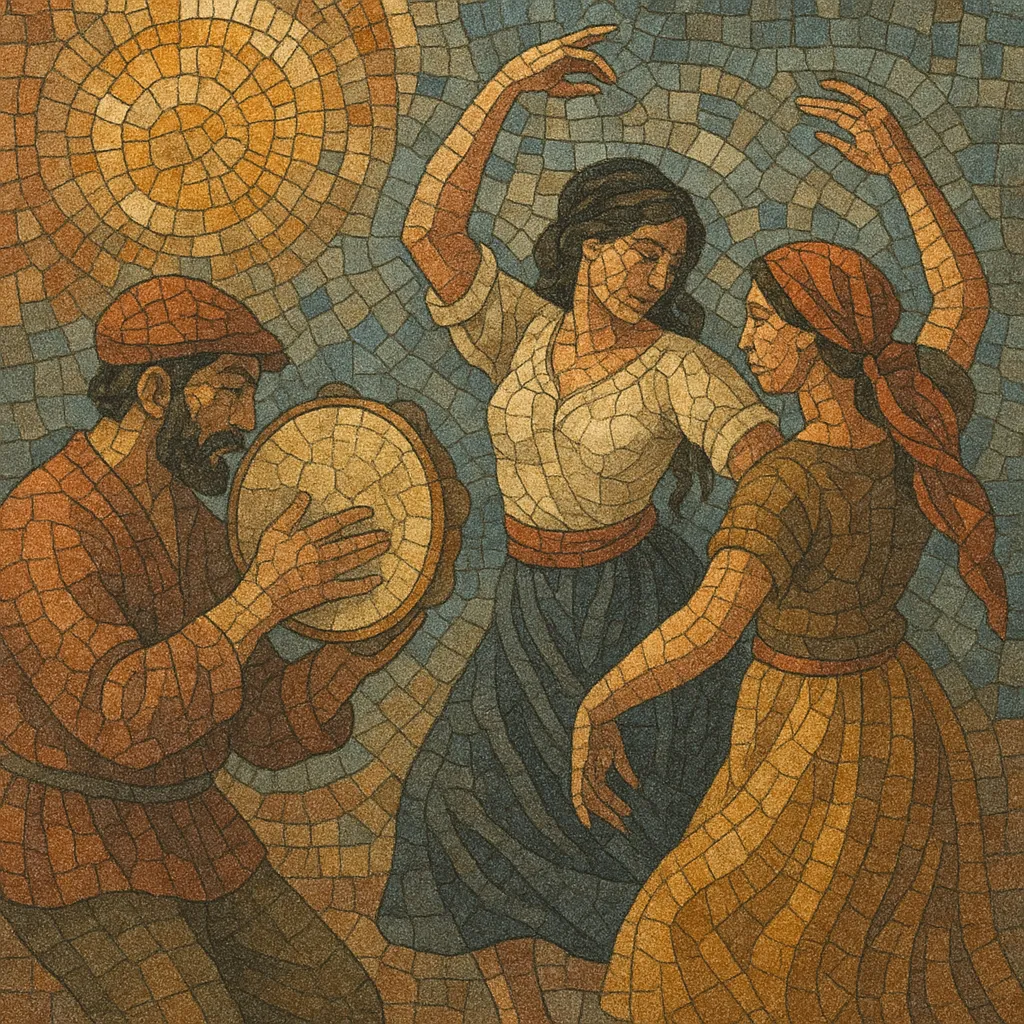Tammurriata is a traditional song-and-dance form from Campania, in southern Italy, centered on the deep, earthy pulse of the tammorra, a large frame drum. It is typically performed during popular religious feasts and seasonal gatherings, where singers, drummers, and dancers create an ecstatic, participatory atmosphere.
Musically, tammurriata is modal and strophic, with call-and-response vocals in Neapolitan dialect (and local variants), steady frame-drum ostinati, and simple, drone-leaning accompaniments from guitar, accordion, ciaramella (shawm), or zampogna (bagpipe). Dancers move in couples or small circles, improvising steps and gestures that mirror the drum’s accents. The result is festive, sensual, and devotional at once—rooted in rural ritual yet vivid in contemporary folk revivals.
Tammurriata likely coalesced in its recognizable form in the 18th and 19th centuries around rural festivities and Marian pilgrimages across Campania (e.g., Montevergine, Madonna dell’Avvocata). Its core instrument, the tammorra frame drum, belongs to a broader Mediterranean drumming lineage, while the singing style reflects local Neapolitan dialect traditions and communal, call-and-response performance at popular feasts.
Throughout the 1800s and early 1900s, tammurriata functioned as dance music for village gatherings and religious festivals. The practice remained largely oral, transmitted by families and “paranze” (local troupes). Though close to the wider tarantella family, tammurriata developed its own drumming patterns, song formulas, and dance codes tied to specific towns and shrines.
During and after World War II, the style entered broader public consciousness via popular song and stage interpretations—most famously “Tammurriata nera” (1944), which referenced contemporary social realities while drawing on folk idioms. Even so, the core rural/ritual practice persisted in community contexts, sometimes in tension with church or official cultural policies.
From the 1970s onward, Italy’s folk revival (with groups like Nuova Compagnia di Canto Popolare and E Zezi) documented, reinterpreted, and popularized tammurriata on records and stages. In the 1990s–2000s, world-music circuits and regional festivals helped spread it beyond Campania, while local “paranze” renewed intergenerational transmission. Today, tammurriata thrives both in traditional feast settings and in concert formats that blend it with folk rock, worldbeat, and urban Neapolitan sounds.


